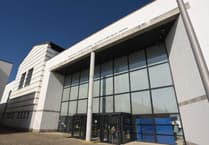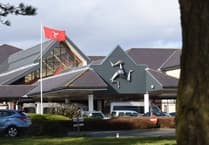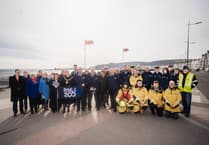A community group has clashed with Manx Utilities over the cost of its latest plans for a regional sewage treatment facility in the village.
Last month Manx Utilities confirmed that the final phase of the Regional Sewage Treatment Strategy (RSTS2) would involve ‘regional treatment solutions’ for Garff and Peel, though it has not announced where the actual treatment sites would be.
The B4LB group, which says that it is ‘dedicated to ensuring pollution-free waters in Laxey bay’, is claiming that pumping sewage away to the central treatment facility and Meary Veg would be not only more environmentally friendly, but also £3.1 million cheaper than MU’s plans for regional works.
MU is still discharging raw sewage into the sea at Laxey and Peel, with previous plans for a sewage treatment plant within Laxey itself having been opposed by the local commissioners and rejected by the planning committee.
State-owned Manx Utilities says that ‘a location between the two villages is by far the best option when looking at both cost and environmental impact and the community’s concerns about individual treatment works at the Cairn and Glen Garwick’.
B4LB claims that MU is wrong on its cost estimates, having employed its own accounting consultant. It is calling on Tynwald’s environmental and infrastructure policy review committee to investigate MU’s latest plan.
Spokesperson for the group Roger Tomlinson said: ‘Ian George of Arcadis (MU’s consulting engineers) has provided the costing comparisons for a 50-year period. Their figures for a regional works are £18.3 million compared to the option of pumping away at £24.8 million.
‘We challenged these figures and secured the services of a qualified cost accountant consultant who has experience in calculating net present values and life cycle costs.
‘We’re confident that the pump-away option is actually at least £3.1 million less expensive than the regional works.’
However, MU said that this estimate was unfounded due to it being ‘based on assertions that pipes can be laid at shallower depths than industry standards, unrealistic rates for pipe laying from adjacent jurisdictions, incorrect calculations and claims that the Garff sewage should be processed at no cost by the existing IRIS infrastructure’.
Mr Tomlinson went on to say that the perceived cost discrepancy ‘raises very important questions and doubts over a government department’s ability and integrity to cost a major infrastructure project.
‘We are all mindful of recent and ongoing government major infrastructure costings crises,’ he added.
‘Our proposal is for a fully-pumped solution to connect with Meary Veg [in Santon], a facility that serves over 66% of the island’s population for treatment of sewage to a higher standard than that available using the IRBCs (Integral Rotating Biological Contactors) preferred by Arcadis (the Manx Utilities Consulting engineers).
‘This was the original Tynwald solution to Laxey Bay’s sewage issue. Indeed, a connection was built and is waiting and available near Onchan.
‘After the original proposal was defeated, Manx Utilities formed a consultative group that included two members from our community group and two members from the Garff Commissioners along with the two Garff MHKs.
‘Disappointingly in March 2022, while the consultative process remained ongoing, MU board decided to go with the Arcadis recommendation for IRBCs.’
The group says that both schemes require large holding tanks at Garwick and Old Laxey, with both requiring pump stations at these holding tanks, and both requiring buried piping – 4.3km for IRBCs and 10km for pump away.
Furthermore, it argues that both would require routine visits by a tanker to remove foreign objects from the pump station filters, and that during overload of the system, both would still rely on direct discharge of raw sewage into the bay, although this would be less of an issue for pump away as the speeds can be increased to increase the flow away from the bay.
However, it points out IRBCs require a greenfield site to be bought, whereas pump-away does not.
The group says IRBCs require a sewage works infrastructure to be bought and built and a daily service by large diesel-powered haulage tankers to remove solid sewage sludge by narrow roads to Meary Veg, while pump-away does not.
Mr Tomilinson added: ‘Our preferred pump-away option requires only one extra pump and an extra 5.7km of buried piping. IRBCs will dump up to four million litres of questionably-treated effluent back into Laxey Bay. Pumpaway does not.
‘IRBCs requires more money to be spent off island for the purchase of the IRBCs and associated accessories (odour control, UV treatment etc).
‘Every pound spent on island is worth approximately £1.80 to the Manx economy. Pumpaway keeps more of our cash on island for the benefit of us all.
‘With IRBCs, Laxey beach will never achieve Blue Flag status.
‘Pumpaway permits Blue Flag status, for the benefit of Laxey and the Isle of Man. IRBCs will cost £3.1 million more than pump away. Money much need to spend on other matters.
However, MU has hit back saying: ‘There is no reason why the proposed solution will not allow Laxey to gain “Blue Flag” status in the future, since the planned works will provide “excellent” bathing water quality, equal to that of any pump away solution.’
Mr Tomlinson went on: ‘Given the huge inaccuracies of the Arcadis costings, and concerns that such costings may mislead any decision making, we have written to the environmental and infrastructure policy review committee requesting they investigate.’
The group says one new argument put forward by Manx Utilities in a ‘desperate attempt’ to shore up its preferred IRBC option is that a scheme to pump away to Meary Veg would delay the process by up to two years.
Mr Tomlinson concluded: ‘The majority of the construction and pipe work similar to both solutions could be started tomorrow.
The only possible delay would be civil servants’ red tape and a need for Tynwald to approve and amend the current strategy.
‘A saving to the Manx purse of at least £3.1 million would no doubt speed things up and restore public confidence.’
MANX UTILITIES’ RESPONSE:
Manx Utilities said it was ‘committed to resolving the unacceptable discharge of raw sewage into our seas as a matter of urgency’.
The chosen solution for Garff must strike a balance between cost and environmental impact, it said.
Following the unsuccessful planning application for a works at the Cairn site in Laxey a full review of all options has been undertaken, by consultants Arcadis.
Local sewage treatment works for Laxey and Baldrine, a combined works for both catchments, and the pump-away to Meary Veg option have all been analysed.
This process concluded a combined works to treat sewage from Laxey and Baldrine, at a location between the two villages is by far the best option when looking at both cost and environmental impact and the community’s concerns about individual treatment works at the Cairn and Glen Garwick. It addresses all of the issues raised with the original application by the planning committee and although more expensive than having separate works in both Laxey and Baldrine, is considerably cheaper than a pump-away option.
The carbon cost over 50 years is also over 20% less than the pump-away option, and the disruption during construction lower.
The proposed treatment process produce a final effluent of equal quality to that produced at Meary Veg.
There is no reason why the proposed solution will not allow Laxey to gain ‘Blue Flag’ status, since the planned works will provide ‘excellent’ bathing water quality, equal to that of any pump-away solution.
The use of diesel tankers to transport sludge will be phased out within the next decade as the testing of ‘green’ tankers is already underway in the UK.
Manx Utilities has tried to be open and transparent by allowing (in good faith) the B4LB group sight of its calculations. The claim that the pump-away solution is cheaper than the preferred combined solution is unfounded, based on assertions that pipes can be laid at shallower depths than industry standards, unrealistic rates for pipe laying from adjacent jurisdictions, incorrect calculations and claims that the Garff sewage should be processed at no cost by the existing IRIS infrastructure.
Manx Utilities’ calculations have been produced by engineering cost consultants with support from international consultants.
Manx Utilities has seen the calculations and assumptions that the B4LB Group have made to arrive at their conclusions and has advised regarding where they are in error.
It is disappointing that they’ve chosen to issue a media statement rather than to continue the dialogue in the special community forum that Manx Utilities set up.
Manx Utilities has no preference for a regional solution over a pump-away option, but does have a responsibility to recommend the progression of the best solution.
The proposed solution addresses all of the concerns previously raised, provides the highest quality bathing water, offers the lowest environmental impact and is considerably cheaper than the pump away option both on day one and over 50 years.




